From Caterpillar to Monarch Butterfly: A Magical Journey!
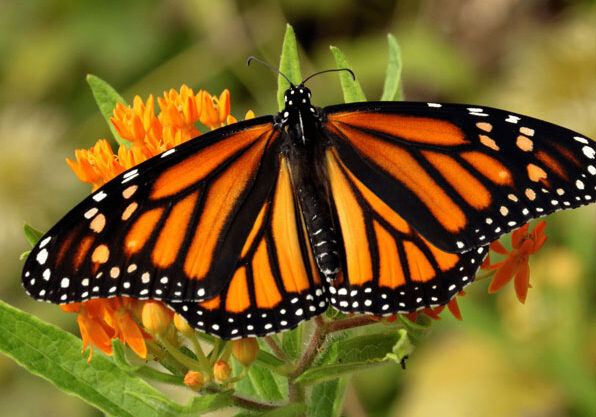
Ah, the Monarch Butterfly. Do you remember the awe and wonder of witnessing a caterpillar transform into a beautiful butterfly as a child? It’s a magical experience that captivates young minds. Junior Kindergarten students at Renbrook School are so lucky to benefit from the passion that their teacher, Robin Ellef, holds for these beautiful creatures.
The Monarch Butterfly
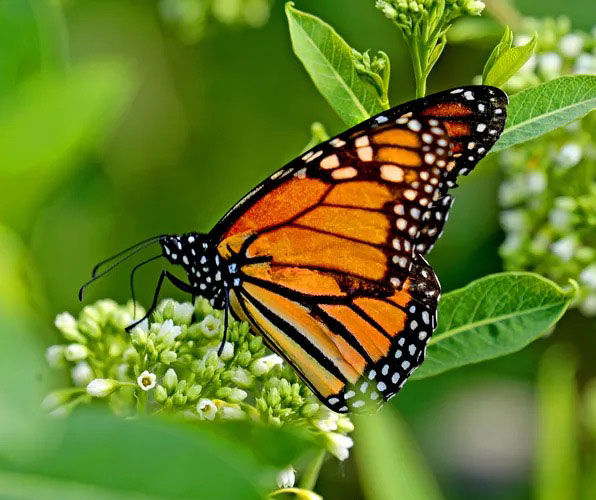
The Monarch butterfly, with its vibrant orange wings adorned by intricate black veins and white spots, is not just a stunning creature; it is also a symbol of conservation and the delicate balance of our ecosystems. The population of Monarch butterflies has been declining steadily in recent years, and their preservation is vital for more reasons than just their aesthetic beauty.
Monarch butterflies are an essential part of our ecosystem, playing a vital role in pollination. As they flutter from flower to flower in search of nectar, they transfer pollen grains, aiding in the fertilization of various plant species. This process is crucial for the reproduction of many plants, including those that provide food for other wildlife and humans.
One of the most remarkable aspects of Monarch butterflies is their epic migration journey. They travel thousands of miles from North America to their wintering grounds in Mexico. This incredible feat of endurance and navigation has fascinated scientists and nature enthusiasts for years. Preserving their habitats along their migration route is essential to ensuring the continuation of this awe-inspiring phenomenon.
Budding Scientists in Junior Kindergarten
In the past two weeks, Junior Kindergarten students have released eight tagged Monarch butterflies that are now on the move to Mexico for the winter! They have two more caterpillars and one chrysalis in their classroom and are watching the transformation with excitement and anticipation. These butterflies travel about 50 miles a day, sometimes catching a ride on thermal air currents, to complete their 3,000-mile journey.
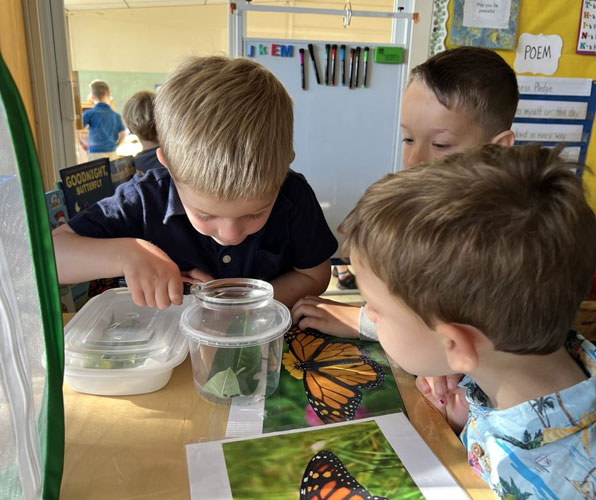
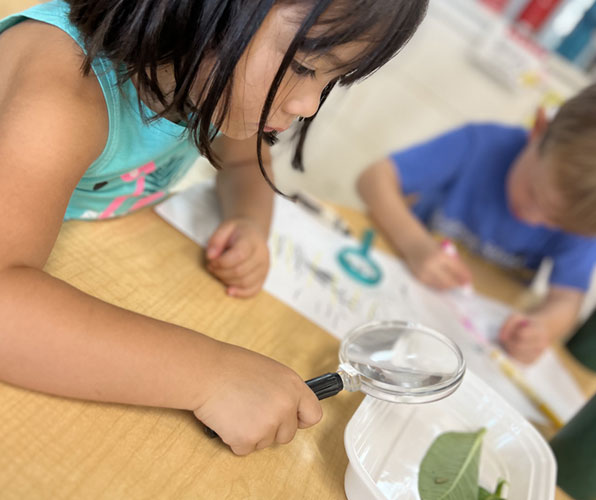
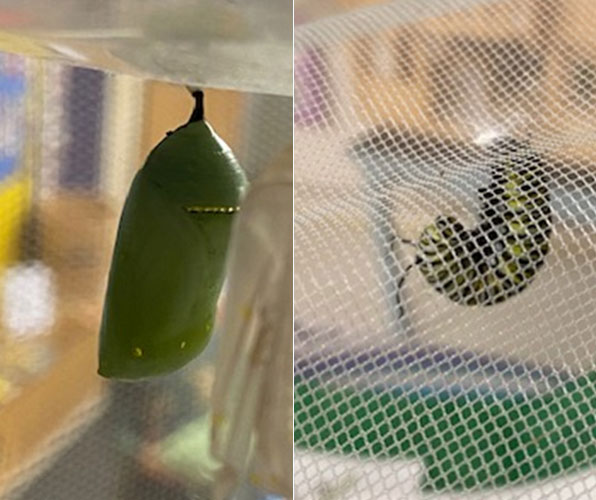
Renbrook Beginning School joined Monarch Watch last spring and students and teachers are doing their part to help save the Monarchs, one butterfly at a time. Monarch Watch is a nonprofit education, conservation, and research program that focuses on the monarch butterfly, its habitat, and its spectacular fall migration. The organization provides the public with information about the biology of monarch butterflies, their spectacular migration, and how to use monarchs to further science education in primary and secondary schools. They also promote protection of monarch habitats throughout North America.
Junior Kindergarten students and their families embraced the mission of saving these beautiful creatures last spring. They planted a beautiful array of colored flowers and milkweed for the butterflies and other beneficial pollinators. Mrs. Ellef now tags each butterfly prior to launch. They joined the Monarch Watch Tagging Program – a large-scale community science project that was initiated to help understand the dynamics of the monarch’s spectacular fall migration through mark and recapture – and received their tag kit this summer. They now tag each butterfly prior to launch and have become “community scientists” who help answer questions about the monarchs that reach Mexico.
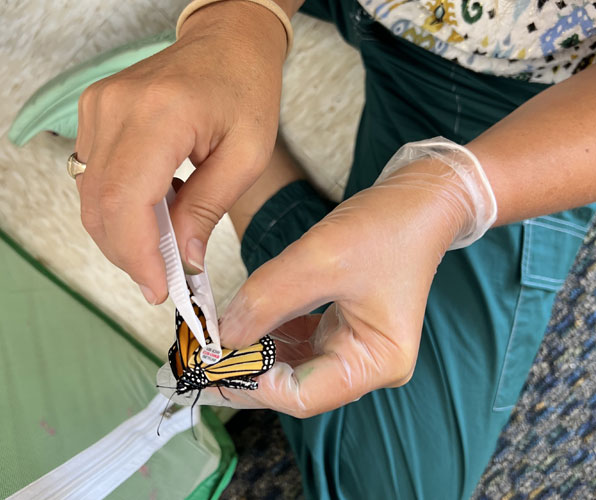
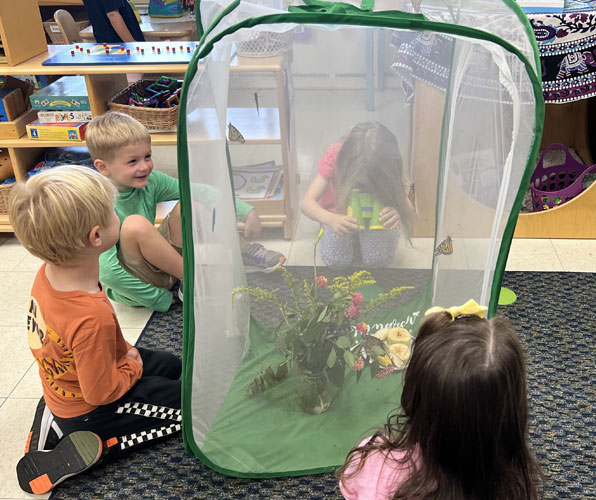
“Teaching children at a young age to respect every living creature is a treasured trait that will carry them throughout their lives,” says Robin Ellef. “At age 49, their metamorphosis still leaves me in wonder and awe. How does one creature born with 16 legs, a mouth, and yellow and black stripes, magically turn into a bright orange and black butterfly with 6 legs, polka-dots, and a proboscis (or tongue)?! It is so special to be able to share my love of nature with the children. It is the most precious gift. Most importantly it touches my heart to hear them say that they will always think of me… when they see a butterfly. I hope that they share their love and admiration with others for generations to come.”
The Amazing Metamorphosis and the Lessons Children Learn
Imagine a plump, munching caterpillar transforming into a delicate, fluttering butterfly right before your very eyes! This metamorphosis is like watching a superhero origin story, and it’s an adventure that provides a wealth of benefits for young children:
- Science Comes to Life
Learning about metamorphosis through books is one thing but witnessing it in real life is a whole different level of excitement. Watching a caterpillar form a chrysalis and emerge as a butterfly introduces kids to the wonders of science. They learn about life cycles, adaptation, and the incredible diversity of the natural world.
- Patience and Observation
The transformation from caterpillar to butterfly is a slow and gradual process. Children learn that good things come to those who wait, fostering patience and the ability to observe changes over time. These skills are invaluable in a world where instant gratification is often the norm.
- Respect for Nature
By witnessing this natural wonder, children develop a deep respect for the environment and the creatures that inhabit it. They begin to understand the importance of preserving habitats for these delicate creatures and the role they play in pollination and the ecosystem.
- Appreciation for Diversity
Just like there are countless types of butterflies, there is diversity within caterpillars too! Children learn about the different species, colors, and shapes of caterpillars, helping them appreciate the beauty of diversity in all living things.
- Responsibility and Care
Taking care of a caterpillar and its chrysalis requires responsibility and care. Students learn about providing a suitable environment, ensuring a healthy diet, and being mindful not to disturb the delicate pupation process.
- Embracing Change
The caterpillar’s transformation into a butterfly serves as a beautiful metaphor for change and growth. Young children learn that change is a natural part of life and that embracing it can lead to beautiful outcomes.